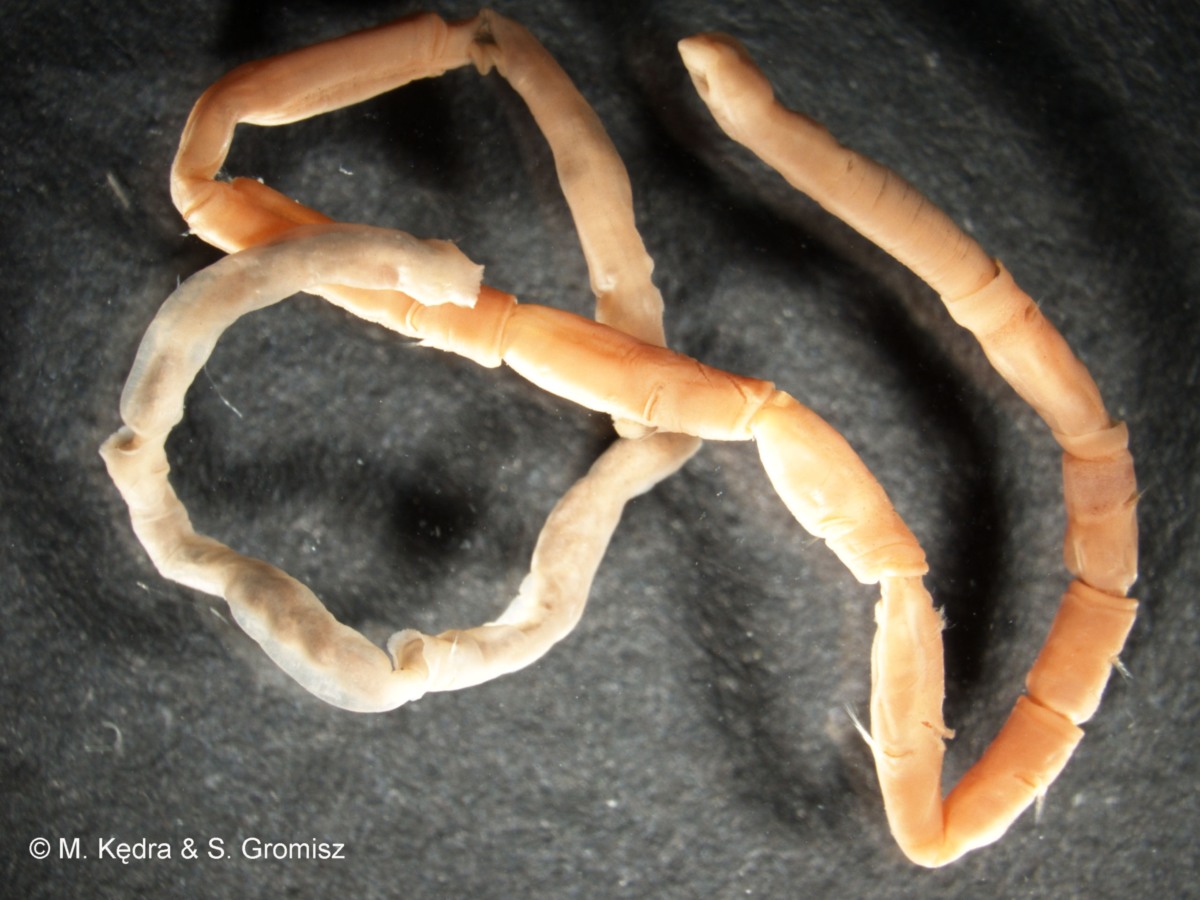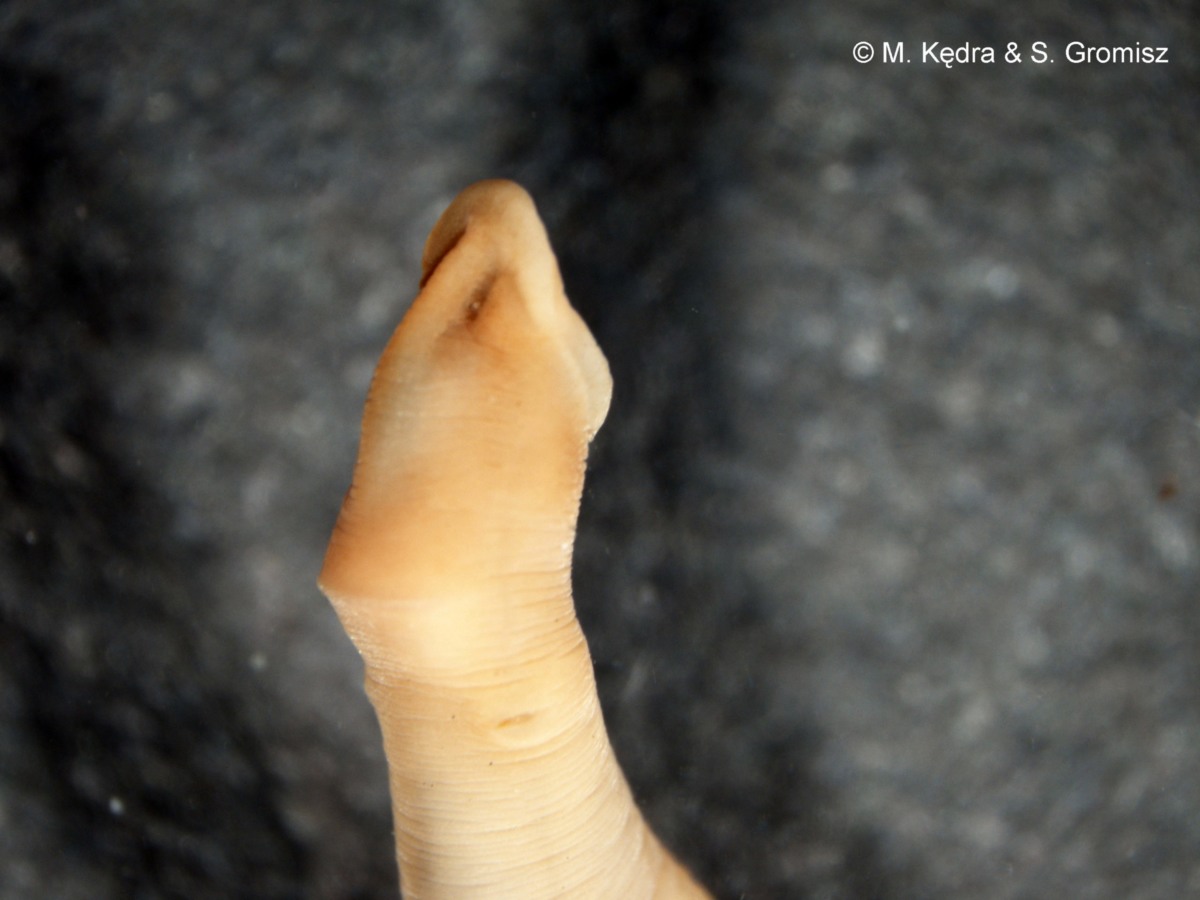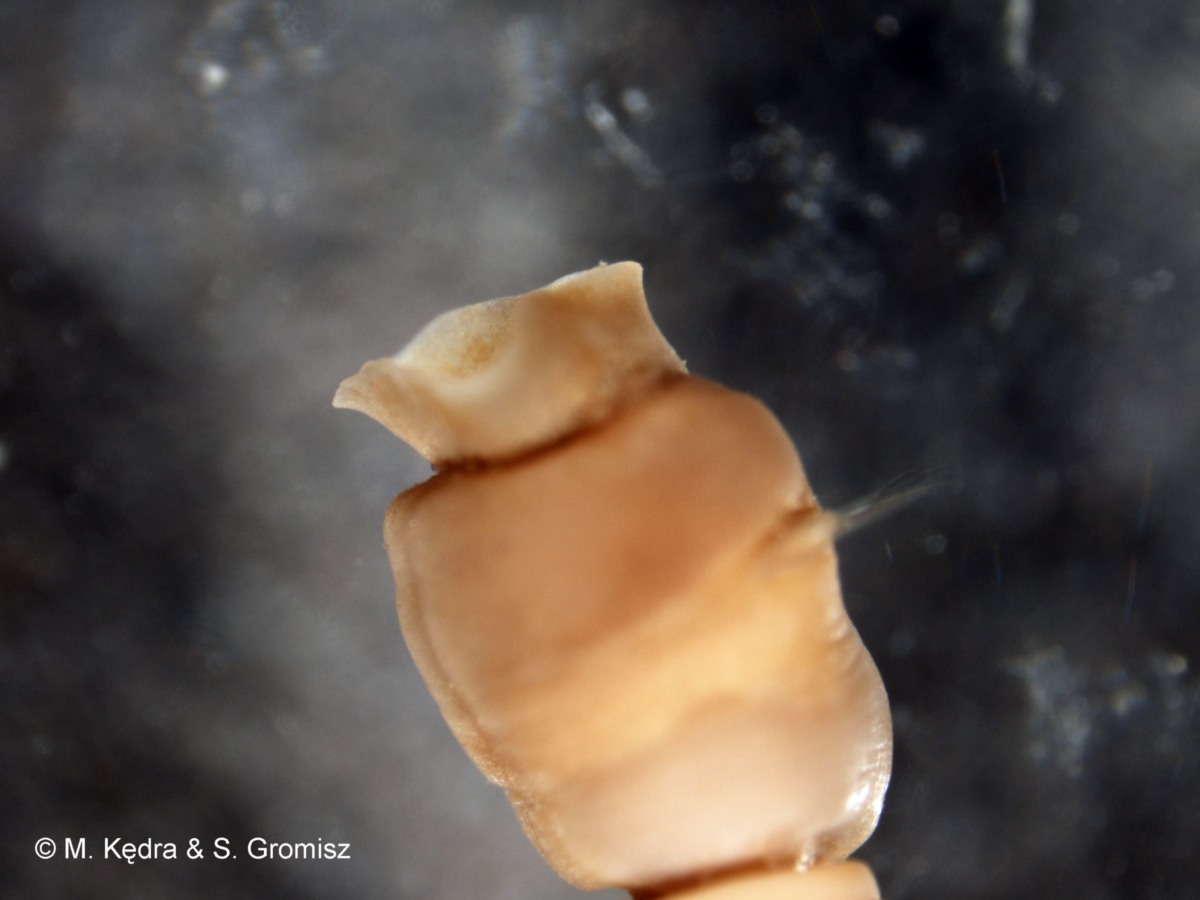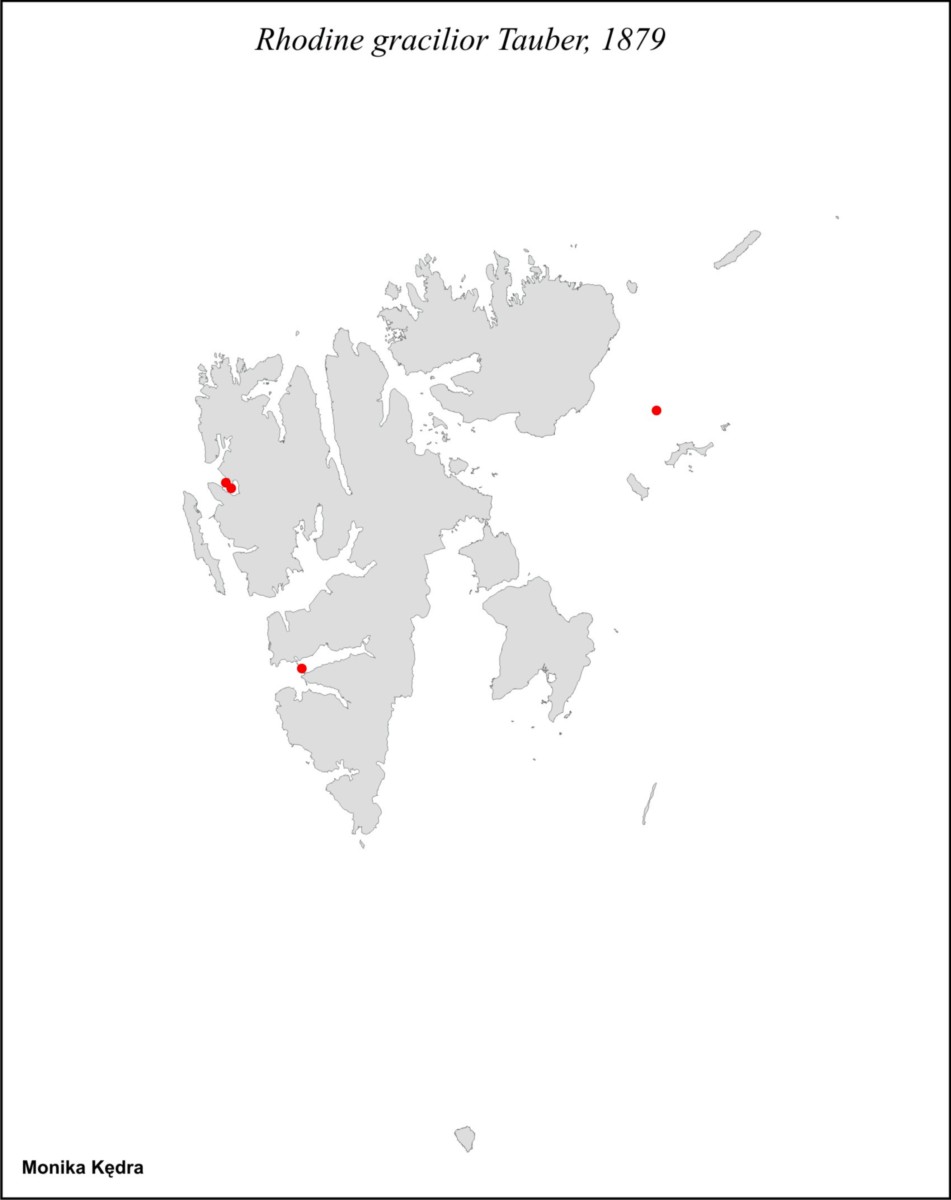Rhodine gracilior Tauber, 1879

|

|

|

|
Rhodine loveni var. gracilior Tauber, 1879
Rhodine loveni var. breviceps Tauber, 1879
Rhodine gracilior Arwidsson, 1906
Distinguishing characteristics
The head without cephalic plate, with cephalic keel.
Posterior segments with posteriorly directed membranous skirts with frilled edge.
Pygidium simple, tube-like.
Species description
Body long, thin and cylindrical. The head without cephalic plate. Prostomium with cephalic keel and fused to peristomium. A crescentic muscular ridge across the dorsum of head. Chaetigers 2 and 3 with anteriorly directed membranous collars, smooth and without incisions. Neuropodial hooks on chaetiger 5-15 in 2 rows. Posterior segments with posteriorly directed membranous skirts with frilled edge, overlaping the anterior portion of the next segment. One or 2 pre-pygidial achaetous segments. Pygidium simple, tube-like. Tube - yellowish-white for young specimens, reddish yellow for older, encrusted with sand.
Size
Up to 60 mm for 30 chaetigers.
Color
Light yellow-brown, transparent. Anterior glandular bands brownish-yellow to red especially on anterior segments, with white linings. Clearly white fields behind parapodia of the 4-9th chaetigers. 5th chaetiger shiny red.
Habitat
From the upper sublittoral down to 1000 m deep, in mud and sand. Living in a characteristic smooth clay-tubes with a thin parchment-like inner layer.
Mobility
Sedentary.
Feeding
Surface deposit feeder.
Life cycle
Distribution
Arctic, North Atlantic and South Africa, Mediterranean, middle and northern North Sea, Skagerrak, Kattegat, Belts and Öresund and western Baltic Sea.

